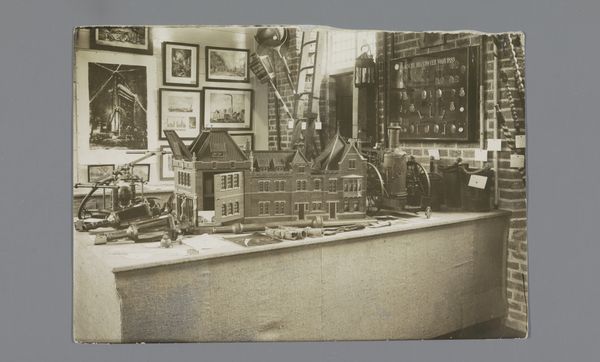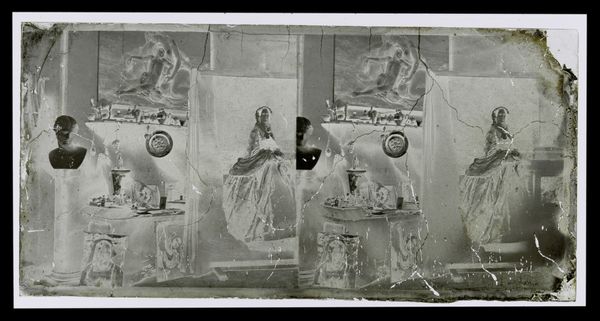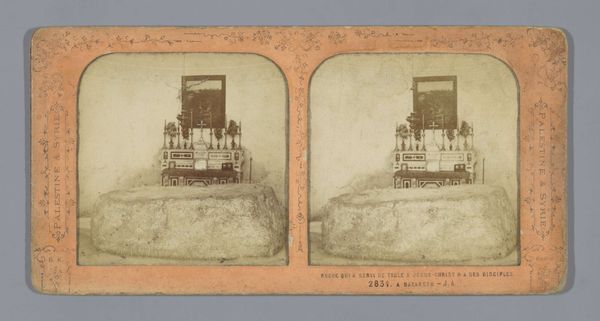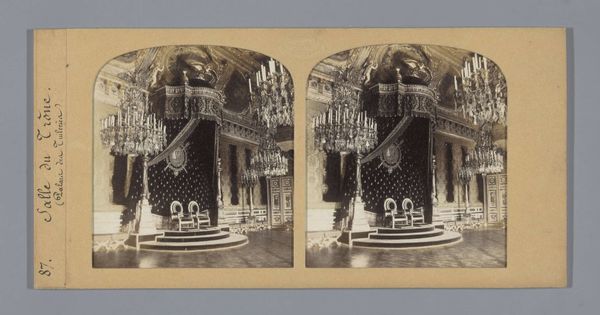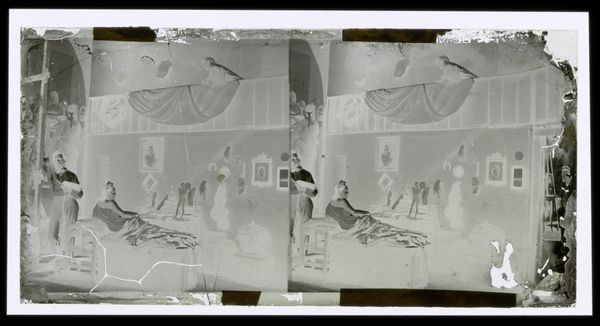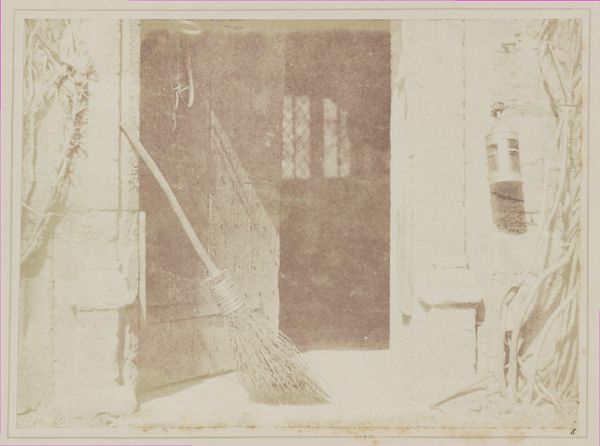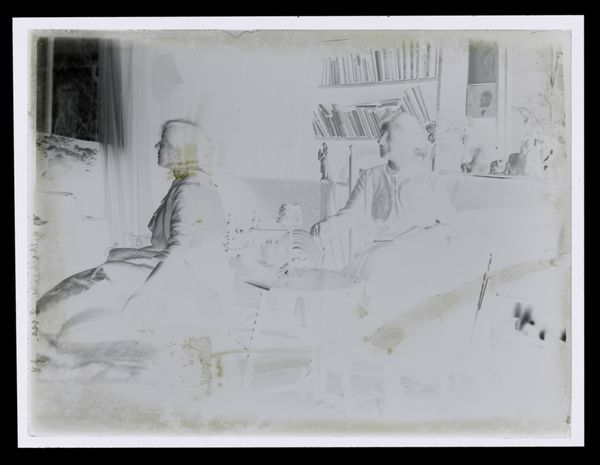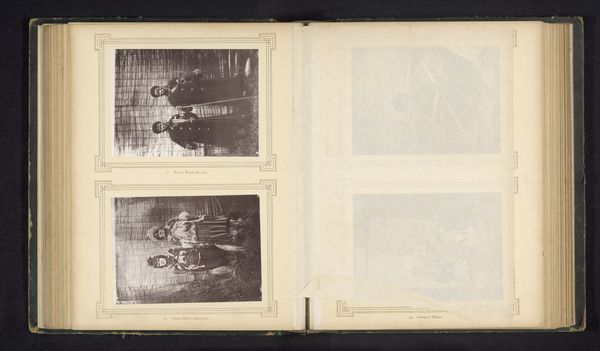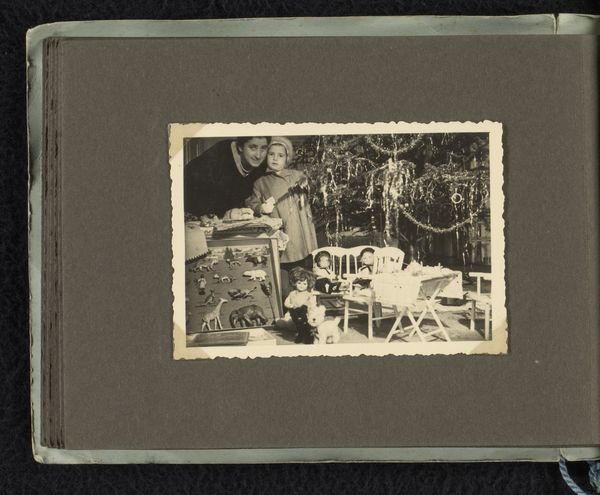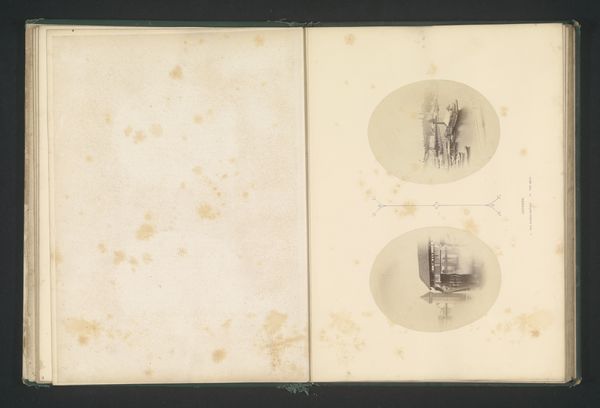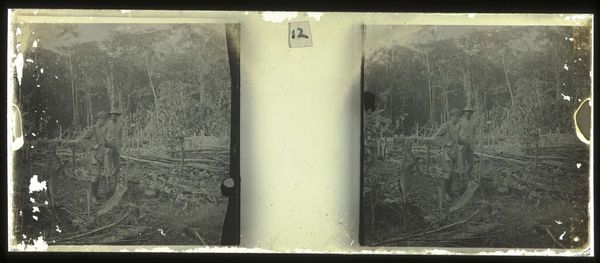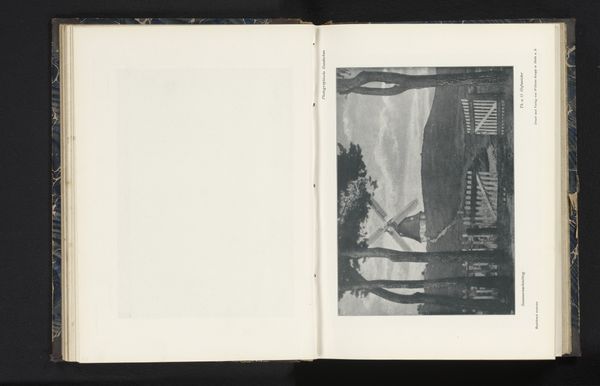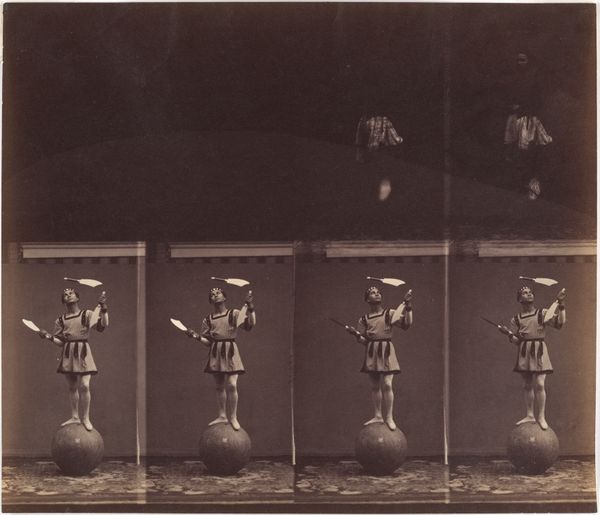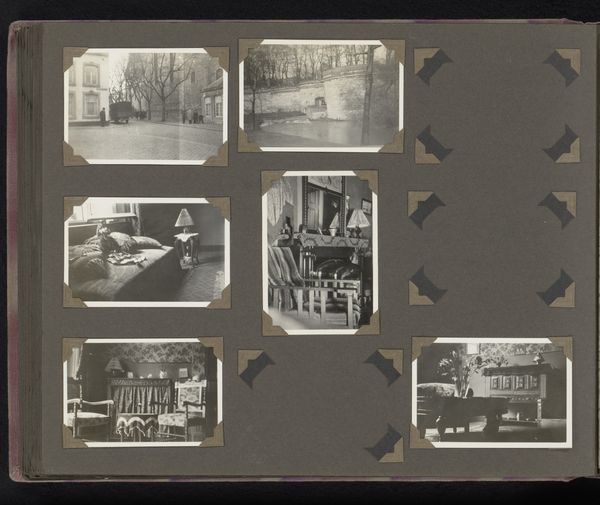
Dimensions: height 80 mm, width 165 mm
Copyright: Rijks Museum: Open Domain
Editor: Here we have a photograph by Sommer & Behles, dating from around 1860 to 1862, titled "Laurens Lodewijk Kleijn in his studio in Rome." The negative tones give it an ethereal quality. What catches your eye when you look at it? Curator: Primarily, the image presents itself as a study in contrasts. Consider the textures; the rough, cracked emulsion of the photographic plate itself juxtaposes with what we can only assume are smooth surfaces of sculptures and paintings within the depicted space. And how do these textural contrasts interplay with the tonal inversions, which complicate depth perception? Editor: So you are looking closely at how the photograph's own material qualities shape our understanding of the scene? Curator: Precisely. Note also the strategic arrangement of the atelier. Sommer & Behles position Kleijn amidst a careful arrangement of props. A formalist approach would analyze the spatial dynamics created by the sculptures atop the cabinets, against the paintings in the background, directing the gaze. Are the objects' heights significant, and if so, how? Editor: That's fascinating. I hadn't considered how much the arrangement contributes to the meaning. Does the lighting also play a role? Curator: The manipulation of light, rendered as tone through photography, serves to flatten the perspective while simultaneously highlighting certain focal points, drawing our eyes to significant objects. Editor: I'm beginning to see that this is more than just a snapshot of an artist's studio; the composition itself speaks volumes. Thank you for showing me a new way to decode what’s happening in this picture! Curator: The interplay between representation and material fact can often yield rich insights, offering new ways to look and appreciate what’s in front of us.
Comments
No comments
Be the first to comment and join the conversation on the ultimate creative platform.
